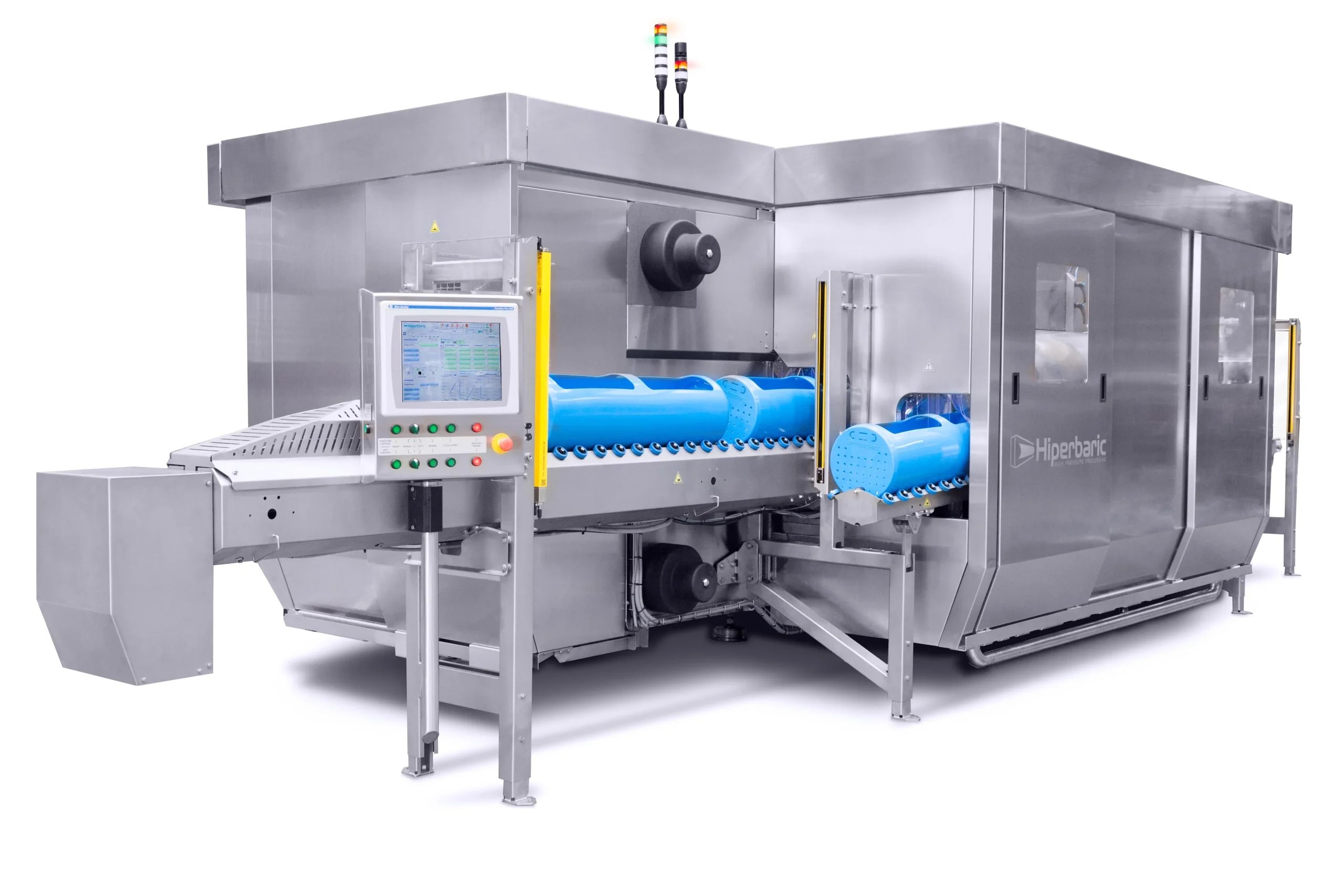What is HPP High Pressure Processing Equipment?
High Pressure Processing (HPP) Equipment is an industrial system used to apply very high pressure to food products, liquids, or biological materials for the purpose of preservation, sterilization, or other desired effects without the need for high temperatures or chemical additives. This technology is primarily used in the food and beverage industry, as well as in biotechnology and pharmaceuticals.
Key Components and Operation:
- Pressure Vessel:
- The core component of an HPP system is the pressure vessel, a cylindrical chamber made from thick, high-strength steel or other materials capable of withstanding extremely high pressures, typically in the range of 100 to 600 MPa (megapascals). The vessel is designed to evenly distribute pressure across the product, ensuring uniform treatment.
- Pressure Generation System:
- Pressure in the vessel is generated by a high-pressure pump, which compresses a liquid (usually water) within the vessel. This pressure is transmitted uniformly throughout the liquid medium to the product. The high-pressure pump is a critical part of the system and is engineered to achieve and maintain the required pressure levels reliably.
- Loading and Unloading Mechanism:
- Products are loaded into the pressure vessel using specially designed carriers or baskets. These carriers are designed to hold the product securely and maximize the use of space within the vessel. After processing, the products are unloaded and transferred to the next stage of production or packaging.
- Control System:
- The entire process is controlled by a sophisticated control system, often based on PLCs (Programmable Logic Controllers) or SCADA (Supervisory Control and Data Acquisition) systems. The control system manages the pressure ramp-up, hold time, and decompression, ensuring that each product batch is processed according to precise specifications.
- Cooling System:
- During the pressure application, some heating of the product may occur due to the adiabatic compression of the liquid. Therefore, an integrated cooling system may be included to maintain optimal temperatures and prevent any thermal degradation of the product.
- Sealing and Gasket Systems:
- High-pressure seals and gaskets are critical for maintaining the integrity of the pressure vessel. These components are designed to withstand the extreme pressures and to prevent any leaks that could compromise the safety or effectiveness of the process.
- Data Logging and Monitoring:
- Modern HPP equipment includes sensors and data logging systems to continuously monitor pressure, temperature, and time during processing. This data is critical for quality control and ensuring that the process meets regulatory requirements.
Operating Principle:
The operation of HPP equipment involves placing the product in a sealed vessel filled with water or another liquid medium. The system then applies high pressure, uniformly transferring this pressure to the product. This intense pressure inactivates microorganisms, such as bacteria, viruses, and yeasts, without significantly affecting the sensory and nutritional qualities of the product. Unlike traditional heat-based pasteurization, HPP can achieve microbial inactivation at ambient or low temperatures, preserving the taste, texture, color, and nutritional value of the food.
Applications:
- Food Preservation:
- HPP is widely used to extend the shelf life of fresh foods such as juices, meats, seafood, and ready-to-eat meals by inactivating pathogens and spoilage microorganisms without the need for preservatives or heat.
- Juice and Beverage Processing:
- HPP is used to process fruit and vegetable juices, smoothies, and other beverages, maintaining their fresh taste and nutritional content while ensuring safety.
- Guacamole and Dips:
- Fresh guacamole, salsa, and other dips are often processed using HPP to extend shelf life without compromising taste and texture.
- R&D in Pharmaceuticals and Biotechnology:
- HPP is used in research and development for sterilizing biological materials or inactivating viruses in pharmaceuticals and biotechnology.
Advantages:
- Preservation of Nutritional Quality: Unlike thermal processes, HPP preserves the vitamins, minerals, and enzymes in food, making it a popular choice for health-conscious consumers.
- Shelf Life Extension: By inactivating spoilage microorganisms, HPP extends the shelf life of perishable products, reducing food waste.
- No Need for Preservatives: HPP can achieve microbial safety without the need for chemical preservatives, aligning with the clean-label trend in the food industry.
- Versatility: The technology can be applied to a wide range of food products and biological materials, making it a versatile tool in various industries.
Limitations:
- High Initial Cost: The equipment and installation costs for HPP systems are significant, which can be a barrier for small and medium-sized enterprises.
- Batch Processing: Most HPP systems operate in batch mode, which can be less efficient than continuous processing methods.
- Product Size Limitation: The size of the pressure vessel limits the size and quantity of products that can be processed in a single batch.
In summary, HPP equipment is a powerful and advanced technology that uses high pressure to preserve food, beverages, and other materials without the need for high temperatures or chemical additives, ensuring product safety while maintaining quality.


